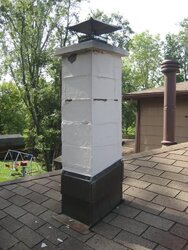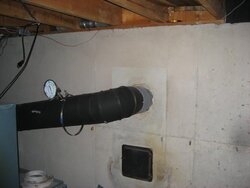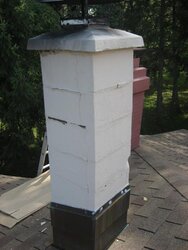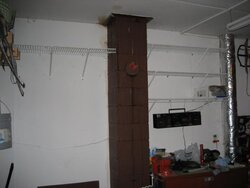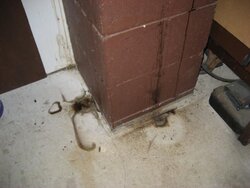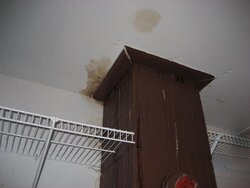This spring or early summer the roof on the house needs to be replaced, Along with the roof replacement will be a chimney replacement for the wood burner.
See the pictures below of current block chimney. The outside ones were from last September, its worse now, the ones from in the garage were taken recently.
The few guys that I talked to say knock the block chimney out and replace it with pipe.
My WoodChuck Wood Furnace has a 8” flue, and is in the basement.
Flue goes out thru the basement concrete wall, up into the garage, and up and out thru the roof.
My concern is going thru the concrete wall with the new pipe / flue from the basement. Thru the wall then into a tee, up for the flue then below for the clean out..??
Then….what are my options for pipe? Double wall steel? Or go with stainless steel??
And then buying now….gezzz the stove shops around here are already selling gas grills and outdoor fireplaces….can i order off this site or off the internet?
Any insight is greatly appreciated.
See the pictures below of current block chimney. The outside ones were from last September, its worse now, the ones from in the garage were taken recently.
The few guys that I talked to say knock the block chimney out and replace it with pipe.
My WoodChuck Wood Furnace has a 8” flue, and is in the basement.
Flue goes out thru the basement concrete wall, up into the garage, and up and out thru the roof.
My concern is going thru the concrete wall with the new pipe / flue from the basement. Thru the wall then into a tee, up for the flue then below for the clean out..??
Then….what are my options for pipe? Double wall steel? Or go with stainless steel??
And then buying now….gezzz the stove shops around here are already selling gas grills and outdoor fireplaces….can i order off this site or off the internet?
Any insight is greatly appreciated.


